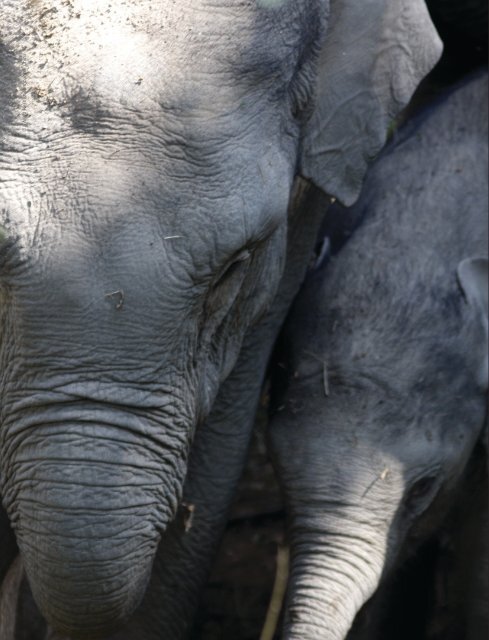ELEPHANTS & IVORY
ELEPHANTS & IVORY
ELEPHANTS & IVORY
You also want an ePaper? Increase the reach of your titles
YUMPU automatically turns print PDFs into web optimized ePapers that Google loves.
© IFAW/J He/Xishuangbanna, China<br />
Earlier, we noted that elephant conservation<br />
currently is based on an incomplete and<br />
arbitrary selection of the available information<br />
on the interrelationships between animals and<br />
their environments. The biased selection of<br />
the information that has been used to inform<br />
decisions in conservation management is a<br />
reflection of historical and, still prevailing, human<br />
attitudes, values, objectives and experience, and<br />
in no way represents the accumulated wisdom of<br />
science and other ways of knowing.<br />
Here, we briefly summarize what is broadly<br />
known from a variety of disciplines about the<br />
nature of animals – in particular, elephants – and<br />
their relationships with humans and the biosphere.<br />
This summary paints a very different picture<br />
of elephants than the one that has dominated<br />
our discussions in the previous chapters. It<br />
illustrates the discrepancy between the totality<br />
of our current knowledge and what is actually<br />
used to shape elephant conservation policies and<br />
management actions.<br />
EVOLUTIONARY BIOLOGY – HUMANS<br />
ARE ANIMALS TOO<br />
Beginning with Darwin’s On the Origin of Species,<br />
first published in 1859, and a later, more detailed<br />
treatise, The Expression of the Emotions in Man<br />
and Animals, published in 1872, we have come to<br />
understand that all living organisms – humans and<br />
elephants included – share a common ancestry. 122<br />
We are all interrelated. Humans are animals.<br />
We are a part of nature, not separate from it, and<br />
certainly not above it. This conclusion is readily<br />
apparent from studies of ontogeny, 123 comparative<br />
anatomy, physiology and biochemistry, molecular<br />
genetics, and trans-species psychology. 124<br />
It is the very understanding of the continuity<br />
among animals that motivates the widespread<br />
convention of using so called “animal models”<br />
in such fields as the medical sciences and<br />
psychology, among others. Nonhuman animals<br />
are used in lieu of humans when developing<br />
and practicing new surgical techniques, or<br />
when studying disease processes afflicting the<br />
human body and mind. Likewise, pharmaceutical<br />
companies test their products on nonhuman<br />
animals – our kin – before they risk them on<br />
humans – our species.<br />
Nonhuman animals are used instead of humans<br />
in experimentation and research not only because<br />
they are physiologically and psychologically like<br />
us, but also because they are arbitrarily classified<br />
as being different from humans taxonomically.<br />
In many parts of the world, it is not considered<br />
unethical or illegal to do things to them that are<br />
forbidden on humans. This profound contradiction<br />
between what is known and accepted scientifically<br />
and what is practiced ethically glaringly<br />
underscores the selective use of science in our<br />
dealings with other animals. 125<br />
61


